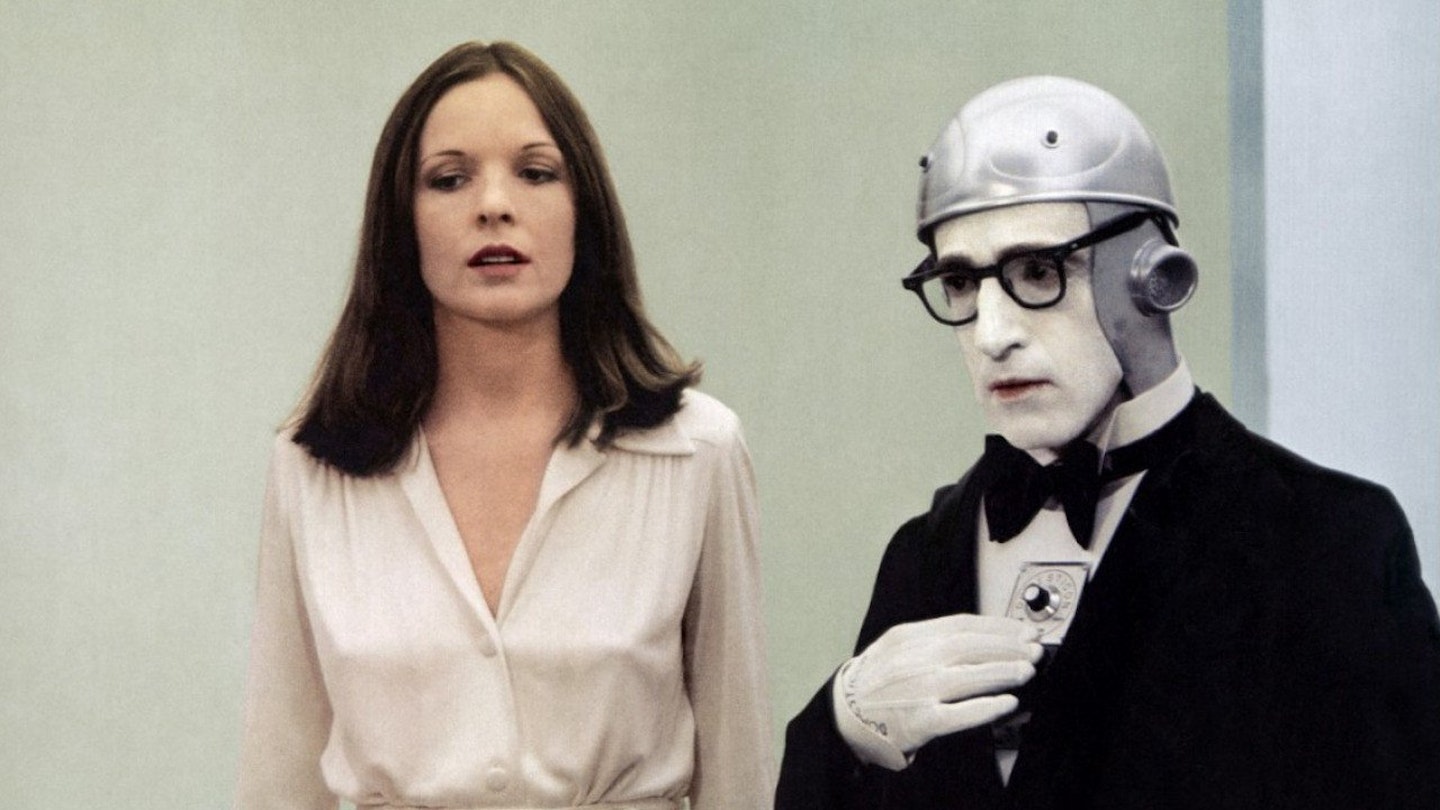Woody Allen hit upon the idea of doing a science fiction spoof just after completing the What Happens During Ejaculation? episode of Everything You Always Wanted To Know About Sex. According to John Baxter's 1998 biography, Allen asked assistant director Fred Gallo about the logistics of building a futuristic town. A somewhat sceptical Gallo replied, "There are four things to stay away from in movies boats and water, animals, kids, and futurism."
Thankfully, Allen ignored him. (And it's a good thing James Cameron didn't go to Fred Gallo for advice too.) Sleeper would mark the fulfilment of Allen's slapstick ambitions and for many, it epitomises his "early, funny films", crammed as it is with unforgettable sight gags and sly conceits. Mel Brooks' Blazing Saddles had set a new precedent for genre spoofs (though he was yet to really start churning them out), and Allen took the baton and ran with it, doing for sci-fi what Brooks would later do for horror and Hitchcock. Sci-fi, of course, was big again in the early 70s after the success of Planet Of The Apes and Kubrick's 2001 and ripe for parody but Allen and TV-grounded co-writer Marshall Brickman took a larger part of their inspiration from books like H.G. Wells' When The Sleeper Wakes and Huxley's Brave New World, and more esoteric movies such as THX113 8 and Alphaville.
Like much of the most enjoyable science fiction, Sleeper is set on Earth but in the future, specifically 2173. Miles Monroe (Allen), owner of the Happy Carrot health food restaurant, has been cryogenically frozen for 200 years. In this particular future there is no sex (all men are impotent, all women are frigid, and orgasm must be achieved inside the Orgasmatron), robots act as domestic help, food is instant, and America is ruled by a dictator in fact, a dictator's nose, which is all that's left of him after an assassination attempt. Monroe falls in love with revolutionary poet Luna (Diane Keaton) and woos her with his quaint 20th century notions and by playing jazz clarinet for her. Indeed, the ragtime jazz of the soundtrack represents Allen's love of a more innocent past not the first or last time old-fashioned music provided a counterpoint to futuristic goings on (see also: The Blue Danube in 2001, the jazz in Star Wars' cantina, and the subversive use of Singin' In The Rain in A Clockwork Orange).
Sleeper makes some pertinent political points (Allen calls science an "intellectual dead end," and predicts that, having overthrown the dictator, they will soon be overthrowing revolutionary leader Erno's nose) and throws in plenty of tart contemporary references: Richard Nixon, McDonalds, sportscaster Howard Cosell and Norman Mailer (who "donated his ego to the Harvard Medical School"). However, the joy of the film almost 30 years later remains its set pieces.
One or two of them are among Allen's finest, and act as a worthy tribute to his comedy heroes such as Buster Keaton and Charlie Chaplin. While on the run, Monroe encounters a farm growing giant fruit and vegetables GM foods v predicted by stand-up comic in 1970s! and having peeled a ten-foot banana, he proceeds to enact the world's biggest slipping-on-a-banana-peel gag. Having disguised himself as a robot, Monroe is called upon to pass round the Orb at a dinner party, a 2173 replacement for dope, and because he is in fact human, he gets as high as the guests. (The fact that we know about Allen's dislike of drug-taking makes it all the more funny.) And the sequence simply involving him attempting to escape using a ladder that is too short has to be seen to be believed.
Ironically though, Sleeper is characterised by its stunts and pratfalls, as a filmmaker Allen found the technicalities of his most ambitious film a bore. United Artists only granted the film a measly $2 million budget and a 50-day shoot thus, taking into account the rigours of its futuristic set-up, Allen was forced to shoot in his despised Los Angeles (partly on the old Selznick lot in Culver City, home of Gone With The Wind). On such a shoestring, it is worth applauding the work of both production designer Dale Hennesy and costume designer Joel Schumacher (yes, that one).
Allen attempted a string of complicated physical gags the scene where he dangles from a building on computer tape took two days to complete, and no stunt double was used and ended up complaining, "This is a movie about wires."
